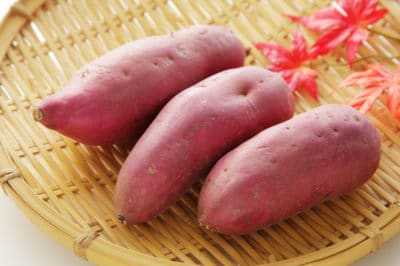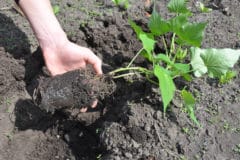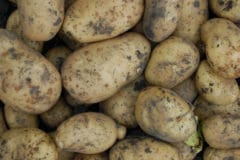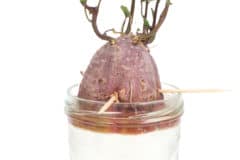What Curing Does
Uncured sweet potatoes are starchy and not at all sweet. When first harvested, the tubers are full of starch rather than sugar. Curing begins the conversion process in which the starches convert to sugar, making the potatoes taste sweeter. Curing also thickens the outer skin, or periderm. This allows small cuts and nicks to heal and promotes longer storage times.
When to Cure
Plan to cure your sweet potatoes immediately after harvest. Ideally, the tubers should be placed in the curing environment within one to two hours after harvest. If you wait any longer than that, the tubers will not cure properly. It’s also critical to handle the sweet potatoes gently during the harvesting and curing process to prevent bruising, which increases the risk of decay.
Curing Requirements
The closer you can come to an ideal curing environment, the better your sweet potatoes will be. The ideal curing environment meets the following requirements:
- A rack or shelves to allow tubers to cure in a single layer.
- Temperatures between 80 and 90°F (27 and 32°C).
- Humidity of 90 to 95%.
- Curing period of four to seven days.
Curing Mistakes
Allowing your sweet potatoes to remain uncured has a serious negative effect on taste and texture. Humidity higher than 90% greatly increases the chance of rot. Curing them too long can also increase the risk of disease and may shorten storage life. However, not curing them long enough means they may not taste as sweet – after four days, cook a tuber and try it.
Creating the Right Conditions
Commercial growers have specially-built curing buildings or containers. In the home environment, you could try placing a 40-watt light bulb in a socket on a cord. Place a large pan of water on the bottom of the oven. Close the door and check the temperature. Increase or decrease the light bulb wattage and open the door more or less until the temperature is correct.
Curing Sweet Potatoes Outdoors
Getting the temperature and humidity right are harder outdoors. If you live in a warm area, however, you could try putting them in a greenhouse or a high-tunnel hoophouse that has the necessary warmth and humidity. Check the area ahead of time to see what temperatures and humidity look like. You can adjust humidity by sprinkling in the area (don’t sprinkle the sweet potatoes). Control temperature with venting or shades.












